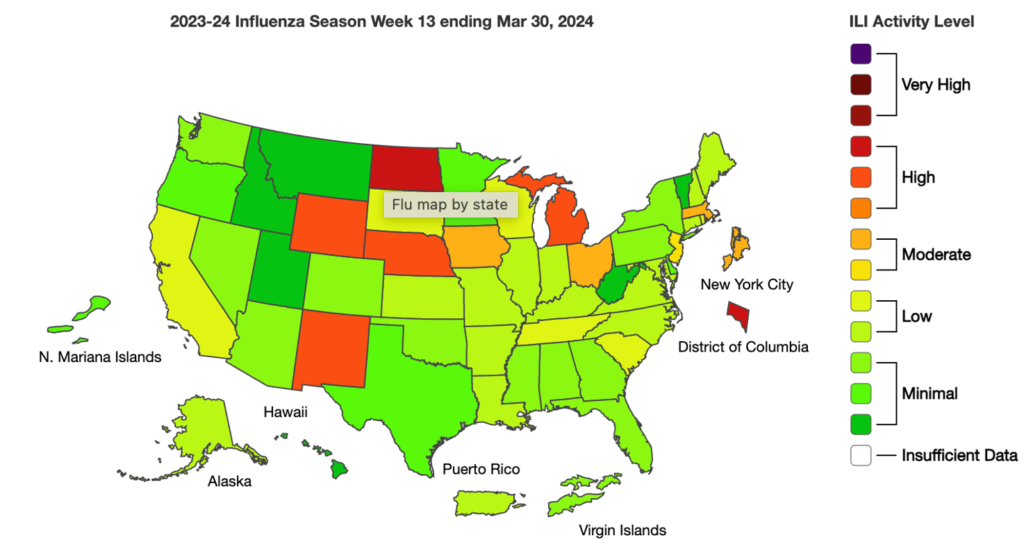Highly pathogenic avian influenza (HPAI) has been recently detected not only in birds, but also in cattle in the US, resulting in numerous media and social media posts providing varying levels of information – and misinformation. With this leading to misunderstandings and questions, TAG has compiled a set of HPAI FAQs providing scientific information and related sources on both the public health and food safety considerations of HPAI. Following is a summary of HPAI, the current situation and public health aspects about HPAI from the FAQs.
Avian influenza is caused by an influenza Type A virus and primarily affects birds. With these viruses classified as “low pathogenic” or “highly pathogenic” based on their genetic features and the severity of the disease they cause in poultry, the currently circulating virus is H5N1, a highly pathogenic strain. However, this H5N1 is not well adapted to infect mammals, nor does it show influenza antiviral resistance, thus CDC has concluded that health risks to humans remain low and that existing vaccines for animals seem to be effective.
The currently circulating H5N1 has been found in wild birds and in commercial and backyard poultry flocks since January 2022, having affected more than 1,000 poultry flocks (82 million birds) across 48 states. Currently, though, of the more than 360 million egg-laying chickens in the US, fewer than 4 million birds were estimated to be affected as of April 2024. Mammals can sporadically become infected with wild species most susceptible, but in late March 2024, HPAI was detected in dairy cattle in Florida and Texas, possibly transmitted from wild birds. Since then, confirmed positive dairy herds have been found in Idaho, Michigan, Kansas, New Mexico, and Texas, with additional presumptive positives in Idaho, Texas, and Ohio.
When about 5% of the cattle on a Texas farm showed symptoms (e.g., drop in milk production, decreased appetite and rumination, mild respiratory signs, low-grade fever, thickened “colostrum-like” milk), HPAI was detected in about 95% of the raw milk samples collected, with significantly lower detection in nasal (20%) and fecal (10%) samples. Additionally, many dead cats and birds were found on the farm. Despite this incident, public health officials continue to conclude that risks are low to the general public and to the safety of pasteurized milk. And milk availability is not impacted.
Following is a link to the full set of HPAI FAQs and their sources, along with other resources for additional information on HPAI, H5N1 and the evolving situation:
COVID Risk Matrix:

Influenza:


Infectious Disease News:
-
- April 7 was World Health Day. It is celebrated annually, and each year draws attention to a specific health topic of concern to people around the world. This year’s topic was “my health, my right.” This year’s theme was chosen to champion the right of everyone, everywhere, to have access to quality health services, education, and information, as well as safe drinking water, clean air, good nutrition, quality housing, decent working and environmental conditions, and freedom from discrimination.
-
- A possible emergence of Elizabethkingia anophelis, that caused meningitis in an infant may be linked to samples of the water reservoir of an automated infant milk dispenser that the family had used at home.
-
- There is a reported surge in mumps cases in Jaipur, India. It spreads easily through coughing and sneezing and mainly affects children. Untreated mumps can lead to hearing loss.
-
- A study done by Harvard and the CDC found persistent disparities in TB incidence among U.S.-born racial and ethnic minorities, despite an overall decrease in cases observed during the analysis period. 72% of TB cases in the U.S. occur among foreign-born persons. The authors conclude that structural racism is largely to blame.
-
- Pertussis incidence is high and climbing in the UK. In January 2024, there were 553 cases in England compared with 858 cases for the whole of 2023. Nearly 5,300 cases of whooping cough, or pertussis, have been reported in the Czech Republic so far this year and whooping cough cases are rising in The Philippines. A decline in vaccination rates is blamed for the increase.





